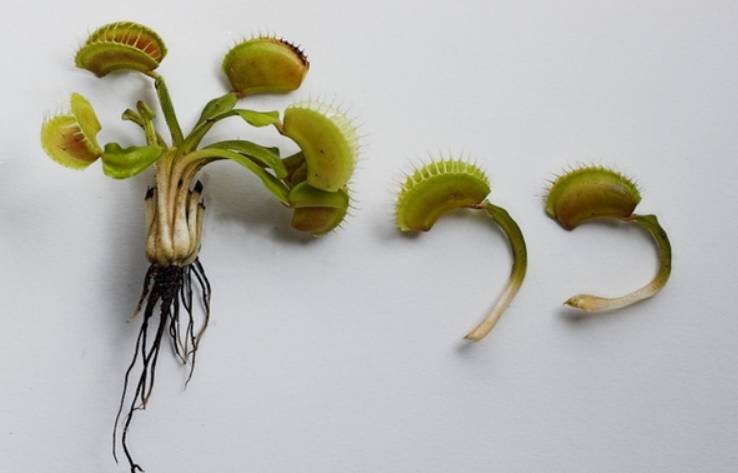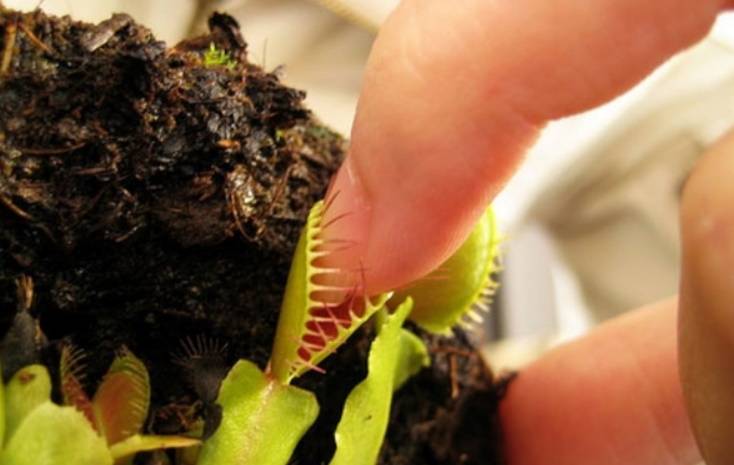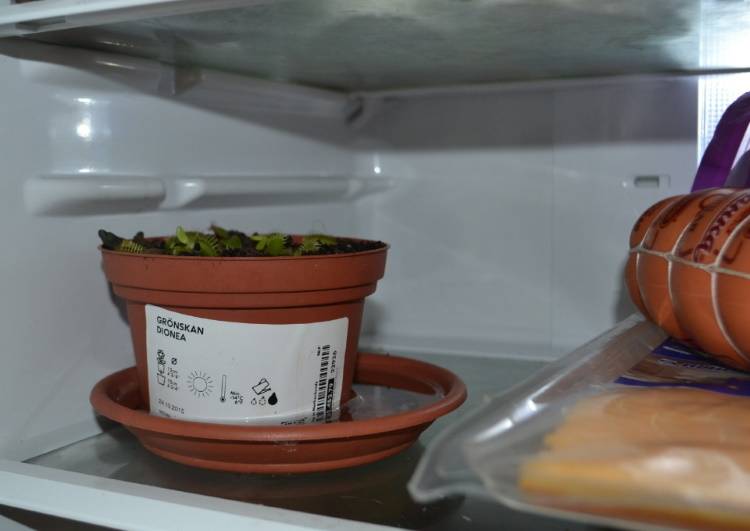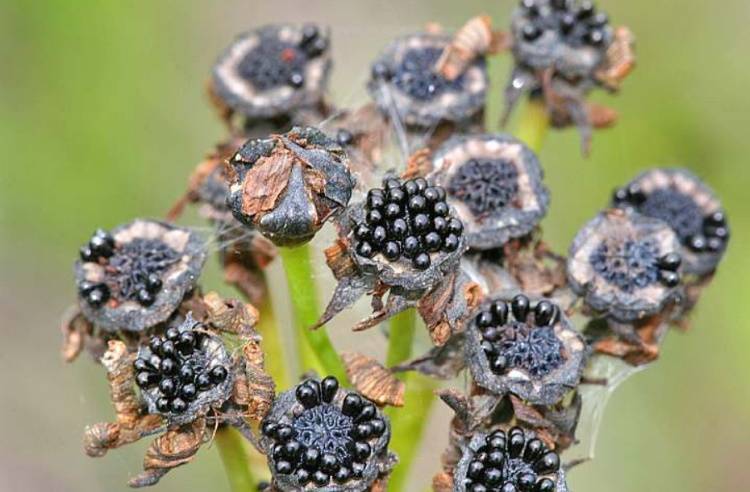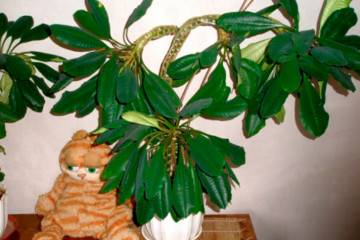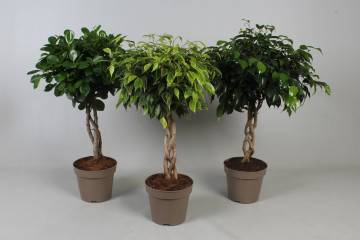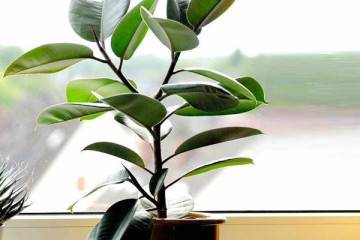Venus flytrap - description and care of the house
Content:
The Venus flytrap flower (Dionaea muscipula) belongs to a group of plants called carnivores. Despite the reputation of aggressors, these exotic plants are very decorative and feed on insects at home only occasionally. In the wild, the flycatcher dionea dies out due to the destruction of its natural habitat by humans. Reproduction of a plant in artificial conditions becomes a way to save a unique representative of the fauna.
Description of plants of the species Dionaea muscipula
Reproduction and cultivation of the perennial venus flytrap, which growers very often call Dionea, is considered a difficult task at home. Plants die if the rules of care are not followed, although it would be wrong to call them very difficult. In order for them to grow in a home flower garden, they need to create living conditions close to natural ones. Under natural conditions, Dionaeans can live for about 20 years.
The historical habitat of flycatchers is the sunny and humid meadows of Northern California, the marshlands of South Carolina of the North American continent. Plants have adapted to live on peat bogs and sandy soils, despite the fact that the soil in these places is very poor in nitrogenous substances.
In winter, it is cold in these parts - in order to survive, the plants are forced to get rid of the deciduous cover. Only the lower underground parts of the flycatchers and a few small leaves remain alive, which can freeze in extreme cold.
What the cycles of life look like
In the wild, flycatchers have two main life periods:
- from March to November - active growth of vegetative organs, traps, fruiting;
- from November to February - a dormant period.
The active period is divided into 4 cycles, in each of them the plants look different.
In the spring, from the underground root-like stem - the rhizome, in which plants accumulate nutrients during the active period, elongated leaves, collected in a rosette, appear on the surface of the soil. The leaves adhere tightly to the soil, the plant seems to be held by them for the ground. From the rhizome, which consists of a bulb and root filamentous processes, not only leaves grow, but also onion babies.
In plants older than 3 years old, generative organs begin to develop in the spring - a long stem, at the top of which inflorescences are formed. In nature, only a few species of insects pollinate flycatchers, among them the bee Augochlorella gratiosa, the bee bee Trichodes apivorus. They never come close to traps. After flowering and pollination, the flower petals fall off, and fruit pods form instead of pistils. Small seeds ripen in them.
After regrowth, the rosette leaves rise, traps form at their ends. They consist of two leaves. On the inner surface of the valves, on both sides, there are sensitive signal antennae-hairs, along the edges of the valves - teeth, which collapse and intertwine after an insect flies into the leaf and touches the hairs several times. Trap leaves die off after 3-4 collapses, and new ones grow in their place throughout the summer.
Since the middle of autumn, new traps have not appeared on flycatchers.During this period, the leaves of plants begin to bend to the soil, stretch, expand, become lethargic. The flappers at the ends of the leaves become smaller. This sign indicates that flycatchers are beginning to prepare for a dormant period.
Popular varieties and hybrids
On the territory of the CIS, the flycatcher does not occur in the open field. Unsuccessful attempts to grow a plant in peat bogs near the town of Kolpino in the Leningrad Region are described on the Internet. The main cultivation of Dionea takes place at home on closed balconies and window sills.
Despite the fact that the flycatcher belongs to the monotypic genus Dionaea, that is, there is only one species of it in nature, breeders have created several varieties and hybrids of the flower. The differences lie in the location and number of valves, the shape of the denticles, and the colors of the traps.
Breeding varieties are very often propagated on the basis of meristem technology, which involves growing new plants in a test tube from cells that are capable of dividing separated from the mother plant.
For growing and breeding at home, breeders offer:
- Akai Ryu variety - with leaves and traps of a deep dark red color that does not change from lighting;
- Czech Garnet variety (Bohemian Garnet) - in early spring, its leaves are painted in green shades, then their color changes to a rich dark red, the edges of the traps in plants of this variety resemble saw teeth (the variety was bred in the Czech Republic);
- variety Dentate Trap - the rosette consists of 7-12 leaves with 2-colored traps, the lower part of the valves is green, the upper part is red;
- Funnel Trap variety - forms firecrackers of different color and structure, young leaves have a green color, later the lower parts - the petioles - remain green, and the valves are repainted in reddish shades;
- hybrid Low Giant (Low Giant) - differs in that it has the largest valves of traps of all varieties of Dionaea muscipula;
- hybrid Long Red Fingers - in the plant, the valves form a bowl, which is surrounded by long teeth in the form of fingers;
- hybrid Red Piranha - has red traps with edges of short triangular teeth.
Caring for the Venus flytrap at home
In order to create proper care for the Venus flytrap flower at home, you will need to purchase high-moor peat soil, agroperlite, distilled water, sphagnum moss, planting containers with drainage holes.
Humidity and air temperature
Although in nature, Dionei live in a humid temperate climate, in room conditions, a level of air humidity in the range of 45-70% is sufficient for them. Room temperatures between 25 ° C and 35 ° C in spring and summer will be optimal for plants to grow, bloom, and feed.
Lighting
Plants need a lot of light. It is better to keep pots with dionaeans on the south side of the house, but it is necessary to provide for salvation from sunburn in advance. Protection from the bright sun in the midst of the summer heat is provided by retractable structures made of shading nets, gauze, and any other mesh material that cuts through ultraviolet light.
Lack of light will cause the leaves of plants to stretch, flycatchers will stop growing traps, they will stop feeding.In flycatchers, a deficiency of elements that they receive from the flesh of insects will form, the leaves will begin to blacken and rot. Plants need daylight hours within 12-16 hours, from this period the flowers should be in the area of the sun for at least 4-5 hours.
If it is impossible to place Dionea on the southern balcony or window sill, artificial lighting is organized at their location until the daylight hours are optimal for them. They use fluorescent lamps, lamps for greenhouses.
Watering
In order to prevent plants from suffering from mineral impurities that are contained in tap water, they use settled rain, melt, distilled water at the temperature of the surrounding plant environment.
All watering is carried out through the root part of the plants - water is poured into pot trays. Do not allow drying out and excessive moisture of the earth.
Soil and planting pots
The soil mixture for Dionaea muscipula is prepared from a mixture of peat with high acidity, agroperlite soaked in distillate, and quartz sand. The ratio of the components is 2: 1: 1. Perlite is prepared in advance: 10 days before the preparation of the soil mixture, the drainage material is poured with water, the liquid is changed every two days.
At the time of planting, dry sphagnum is added to the soil composition. Its purpose is to retain moisture, to prevent excessive drying out of the soil.
In order to plant a dionea, small glass and plastic containers are used. It is not recommended to use ceramics, it is destroyed under the action of the acidic component of the soil and releases components that are harmful to the plant.
The lack of drainage holes in glass containers is compensated by a thick drainage layer.
Feeding
Carnivorous plants need protein foods. Flycatchers in natural conditions lure small flying, crawling, jumping insects into their traps with their sweetish smell, and digest their soft tissues.
The owners of indoor Dionys, kept in a closed room, in which there are no flies, mosquitoes and other living creatures suitable for plants, will have to get food for the plants on their own.
It is impossible to feed the plants with immovable insects, pieces of meat. Plants do not recognize food in them and they will rot between the shutters. During the season, the flower needs to digest at least a dozen flies and spiders.
Features of growing Venus flytrap
Without some conditions specially created for flycatchers, these plants will not survive at home. In the warm season, flowers must be provided with timely watering through the lower pan with water that will not contain mineral salts and other impurities. It is important that there is always sufficient air humidity in the room, a lot of light. Flowers are not fed with any organic or mineral fertilizers.
Preparation for wintering
Since flycatchers in nature go through a stage of winter dormancy, at home they also cannot do without it. In order for the flower not to die during hibernation, it is prepared for this period - preliminary hardening is carried out.
Dionea is placed in slightly colder than room conditions for several hours every day for a week. The duration of the hardening period is gradually increased. On the last day, the plant should stay for 20-24 hours at t 0 ° С .. + 5 ° С. Then he is brought back into the room.
After 3-5 days, dionea can be placed on a cold balcony, windowsill, or placed in a refrigerator.Pre-treatment is carried out with a fungicide that can protect the flower from rot. It can be Fundazol, Topaz, Quadris. Any of the products is diluted according to the manufacturer's instructions, the soil and surface parts of the flower are sprayed with a solution.
In the wintering site, the air temperature should not fall below + 5 ° C. The roots of the plant during hibernation should be moistened. A hardened flower can withstand a short-term drop in temperature to minus values.
Transplantation and reproduction of the Venus flytrap
The transplant is carried out after the end of the rest period. You need to replant flowers annually. This is necessary to change the soil, which decreases its acidity throughout the year. During transplantation, children are separated from the rhizome and placed in individual pots.
Dionea can be propagated using seeds that have undergone cold hardening at a temperature of + 2 ° .. + 7 ° C. Seeds, laid on a damp cloth and sealed in a zip bag, are placed in the refrigerator for 4 weeks. Make sure that the napkin does not dry out. In order to prevent seed rotting, the napkin is moistened with a fungicide solution.
After hardening, the seeds are placed on the surface of an acidic moist substrate in a mini-greenhouse, they are not sprinkled with anything. The soil under the seeds must be constantly moistened. They germinate for a long time, at least 6 weeks. Sometimes the first seedlings appear only after 2 months, they will need to be transplanted after the height of the seedlings is at least 2 cm.
Dionea is not easy to grow, not easy to care for, but it is so interesting. It is especially useful to train adolescent children to care for flycatchers. Such a non-running, but moving pet will become both a friend and a source of new knowledge for the child.

